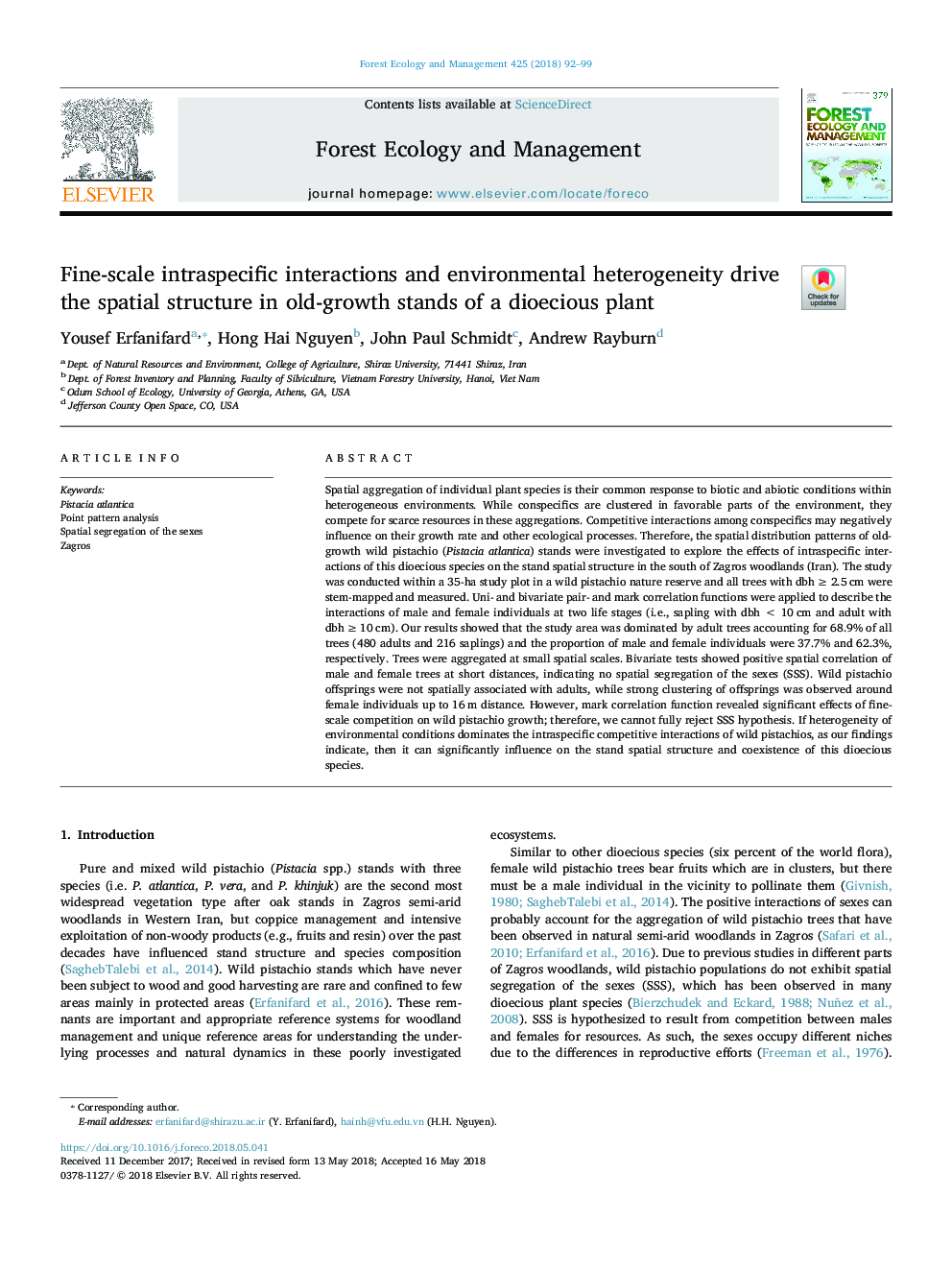| Article ID | Journal | Published Year | Pages | File Type |
|---|---|---|---|---|
| 6541565 | Forest Ecology and Management | 2018 | 8 Pages |
Abstract
Spatial aggregation of individual plant species is their common response to biotic and abiotic conditions within heterogeneous environments. While conspecifics are clustered in favorable parts of the environment, they compete for scarce resources in these aggregations. Competitive interactions among conspecifics may negatively influence on their growth rate and other ecological processes. Therefore, the spatial distribution patterns of old-growth wild pistachio (Pistacia atlantica) stands were investigated to explore the effects of intraspecific interactions of this dioecious species on the stand spatial structure in the south of Zagros woodlands (Iran). The study was conducted within a 35-ha study plot in a wild pistachio nature reserve and all trees with dbhâ¯â¥â¯2.5â¯cm were stem-mapped and measured. Uni- and bivariate pair- and mark correlation functions were applied to describe the interactions of male and female individuals at two life stages (i.e., sapling with dbhâ¯<â¯10â¯cm and adult with dbhâ¯â¥â¯10â¯cm). Our results showed that the study area was dominated by adult trees accounting for 68.9% of all trees (480 adults and 216 saplings) and the proportion of male and female individuals were 37.7% and 62.3%, respectively. Trees were aggregated at small spatial scales. Bivariate tests showed positive spatial correlation of male and female trees at short distances, indicating no spatial segregation of the sexes (SSS). Wild pistachio offsprings were not spatially associated with adults, while strong clustering of offsprings was observed around female individuals up to 16â¯m distance. However, mark correlation function revealed significant effects of fine-scale competition on wild pistachio growth; therefore, we cannot fully reject SSS hypothesis. If heterogeneity of environmental conditions dominates the intraspecific competitive interactions of wild pistachios, as our findings indicate, then it can significantly influence on the stand spatial structure and coexistence of this dioecious species.
Related Topics
Life Sciences
Agricultural and Biological Sciences
Ecology, Evolution, Behavior and Systematics
Authors
Yousef Erfanifard, Hong Hai Nguyen, John Paul Schmidt, Andrew Rayburn,
